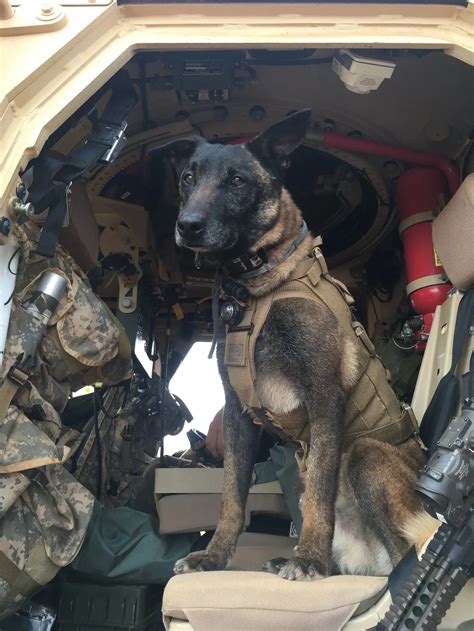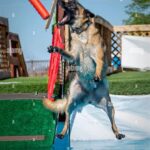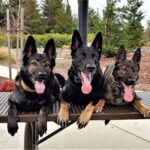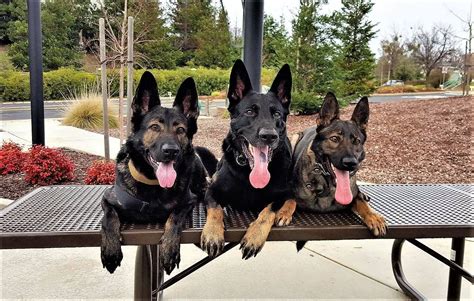
A Belgian Malinois named Kona fearlessly confronted and evicted a seal from its owner’s dock in the Puget Sound, Washington, showcasing the breed’s protective instincts and unwavering courage. The incident, captured on video, quickly went viral, captivating audiences with Kona’s determination to safeguard her territory.
The encounter unfolded when Kona’s owner, Brad Lindsley, noticed a sizable seal lounging on their private dock. Concerned for the seal’s safety and wanting to reclaim the dock, Lindsley initially attempted to coax the marine mammal into the water. However, the seal remained unperturbed, basking in the sun and seemingly unfazed by Lindsley’s presence.
Enter Kona, the Lindsley’s courageous canine companion. Upon realizing the situation, Kona took matters into her own paws, displaying the inherent protective nature of her breed. With a series of assertive barks and calculated movements, Kona approached the seal, effectively communicating her intent. The seal, seemingly understanding Kona’s determination, eventually retreated into the water, relinquishing its sunbathing spot.
“I wasn’t really sure what was going to happen,” Lindsley told news outlets, describing his initial apprehension. “I was kind of worried about Kona, but she’s pretty fearless.” The video of the incident quickly spread across social media platforms, garnering widespread attention and praise for Kona’s bravery and unwavering loyalty.
Belgian Malinois are renowned for their intelligence, agility, and strong protective instincts. They are frequently employed in law enforcement and military roles, where their courage and unwavering dedication are highly valued. Kona’s actions exemplify these breed characteristics, highlighting their innate ability to assess situations and act decisively.
The Confrontation Unfolds
Brad Lindsley recounted the events leading up to the now-famous confrontation. He explained that seals are common visitors to the Puget Sound, often seen swimming and sunbathing in the area. While he appreciates the local wildlife, he also wanted to ensure the dock was available for its intended purpose – docking boats and enjoying the waterfront.
“We see seals around here all the time,” Lindsley explained. “They’re usually pretty harmless, but this one was particularly comfortable on our dock.” He initially tried to gently persuade the seal to leave, hoping to avoid any confrontation. However, the seal seemed determined to stay put.
That’s when Kona stepped in. Recognizing her owner’s mild distress and perceiving the seal as a potential intruder, she took it upon herself to resolve the situation. With focused determination, Kona barked assertively at the seal, carefully maneuvering to encourage it to move.
“She wasn’t aggressive, but she was definitely firm,” Lindsley noted. “She made it clear that the dock was her territory, and the seal seemed to understand that.” The seal, perhaps startled by Kona’s unwavering resolve, eventually slid off the dock and into the water, swimming away without incident.
The Internet Reacts
The video of Kona’s heroic act quickly went viral, captivating audiences around the world. Social media platforms were flooded with comments praising Kona’s courage, loyalty, and protective instincts. Many users lauded the Belgian Malinois breed for its intelligence and unwavering dedication to its owners.
“That dog is amazing!” one commenter wrote. “So brave and loyal. Belgian Malinois are truly incredible animals.” Another user added, “Kona deserves all the treats! What a fantastic display of courage and protectiveness.”
The video also sparked discussions about the appropriate way to handle encounters with wildlife. While some commenters applauded Kona’s actions, others cautioned against allowing dogs to interact with wild animals, emphasizing the potential risks involved.
Expert Opinions
Animal behaviorists and dog trainers weighed in on the incident, offering insights into Kona’s behavior and the characteristics of the Belgian Malinois breed. Experts emphasized that Kona’s actions were consistent with the breed’s inherent protective instincts and its strong bond with its owner.
“Belgian Malinois are known for their intelligence, agility, and unwavering loyalty,” explained Dr. Sarah Matthews, a certified animal behaviorist. “They are highly trainable and possess a strong drive to protect their families and their territory. Kona’s behavior is a clear example of these breed characteristics.”
Dr. Matthews also cautioned against generalizing Kona’s actions to all dogs, emphasizing that individual temperaments and training play a significant role in how dogs respond to unfamiliar situations. “It’s important to remember that every dog is an individual,” she said. “While Belgian Malinois are known for their protective instincts, not all dogs will react the same way in a similar situation.”
Dog trainers emphasized the importance of proper training and socialization for all dogs, particularly breeds with strong protective instincts. Early socialization and consistent training can help dogs learn to differentiate between genuine threats and harmless situations, preventing them from reacting inappropriately.
Understanding the Belgian Malinois Breed
The Belgian Malinois is a highly intelligent and versatile breed, originating from Belgium. They are known for their exceptional working abilities and are frequently employed in various roles, including law enforcement, military operations, search and rescue, and detection work.
Belgian Malinois are characterized by their athletic build, high energy levels, and unwavering dedication to their work. They require consistent training and mental stimulation to thrive, and they are not suitable for owners who cannot provide them with adequate exercise and attention.
The breed’s protective instincts make them excellent guard dogs, but it is crucial to channel these instincts appropriately through proper training and socialization. Without proper guidance, Belgian Malinois can become overly protective and may exhibit unwanted behaviors.
The Puget Sound Ecosystem
The Puget Sound, where the incident occurred, is a complex and diverse ecosystem that supports a wide variety of marine life, including seals, sea lions, whales, and numerous fish species. The region is also home to a large human population, leading to frequent interactions between humans and wildlife.
Seals are common inhabitants of the Puget Sound, often seen foraging for food in the waters and resting on beaches and docks. While generally harmless, seals can become aggressive if they feel threatened or disturbed. It is important to maintain a safe distance from seals and avoid approaching or feeding them.
The incident involving Kona and the seal highlights the importance of respecting wildlife and understanding the potential risks associated with interacting with wild animals. It also underscores the need for responsible pet ownership and proper training to ensure the safety of both humans and animals.
Ethical Considerations
While Kona’s actions were widely praised, the incident also raised ethical questions about the role of pets in interacting with wildlife. Some animal welfare advocates expressed concerns about the potential for harm to both the dog and the seal during the encounter.
They argued that it is generally best to avoid allowing pets to interact with wild animals, as these interactions can be unpredictable and potentially dangerous. They also emphasized the importance of protecting wildlife and respecting their natural habitats.
Others argued that Kona’s actions were justified, as she was simply protecting her owner’s property and ensuring the safety of her family. They maintained that Kona’s behavior was not aggressive and that the seal was not harmed during the encounter.
Ultimately, the ethical considerations surrounding the incident are complex and open to interpretation. However, the incident serves as a reminder of the importance of responsible pet ownership and the need to balance the interests of humans and wildlife.
Lessons Learned
The incident involving Kona and the seal offers several valuable lessons for pet owners and wildlife enthusiasts alike. It underscores the importance of understanding breed characteristics, providing proper training and socialization for dogs, and respecting wildlife.
Pet owners should research the breed characteristics of their dogs and understand their inherent instincts. This knowledge can help them anticipate potential behaviors and provide appropriate training and guidance.
Proper training and socialization are essential for all dogs, particularly breeds with strong protective instincts. Early socialization can help dogs learn to differentiate between genuine threats and harmless situations, preventing them from reacting inappropriately.
It is also crucial to respect wildlife and maintain a safe distance from wild animals. Approaching or feeding wild animals can alter their natural behaviors and make them more likely to become aggressive or dependent on humans.
By understanding breed characteristics, providing proper training, and respecting wildlife, we can help ensure the safety and well-being of both humans and animals.
Conclusion
Kona’s courageous eviction of the seal from her owner’s dock has captivated audiences worldwide, showcasing the unwavering loyalty and protective instincts of the Belgian Malinois breed. The incident serves as a reminder of the importance of responsible pet ownership, proper training, and respecting wildlife. While the ethical considerations surrounding the encounter are complex, the incident offers valuable lessons for pet owners and wildlife enthusiasts alike, emphasizing the need to balance the interests of humans and animals in a shared environment. Kona’s bravery has not only entertained millions but also sparked important conversations about our relationship with both our domestic companions and the wild creatures that share our world.
Frequently Asked Questions (FAQ)
1. What breed of dog is Kona, and what are the typical characteristics of this breed?
Kona is a Belgian Malinois. This breed is known for its intelligence, agility, high energy levels, and strong protective instincts. They are often used in law enforcement, military operations, and search and rescue due to their trainability and dedication. They require consistent training and mental stimulation.
2. What happened in the video that made Kona famous?
The video shows Kona confronting and successfully evicting a seal from her owner’s private dock in Puget Sound, Washington. The seal was sunbathing on the dock, and Kona, displaying her protective nature, barked and moved towards the seal until it retreated into the water.
3. What did Kona’s owner, Brad Lindsley, say about the incident?
Brad Lindsley mentioned that he was initially unsure how the situation would unfold and had some concerns for Kona’s safety. He also acknowledged Kona’s fearless nature and her inherent protectiveness, saying, “I wasn’t really sure what was going to happen… I was kind of worried about Kona, but she’s pretty fearless.”
4. Are seals common in the Puget Sound area, and are they typically dangerous?
Seals are common inhabitants of the Puget Sound. While generally harmless, they can become aggressive if they feel threatened or disturbed. It is advised to maintain a safe distance and avoid approaching or feeding them.
5. What are some of the ethical considerations raised by this incident regarding pets interacting with wildlife?
The incident raises concerns about the potential for harm to both the pet and the wild animal. Some argue that pets should not interact with wildlife to protect both species. Others believe that Kona’s actions were justified in protecting her owner’s property. The incident highlights the need for responsible pet ownership and balancing the interests of humans and wildlife.
6. What kind of training is recommended for Belgian Malinois dogs, considering their protective instincts?
Belgian Malinois dogs benefit significantly from early socialization and consistent, positive reinforcement training. This helps them learn to distinguish between genuine threats and harmless situations. Obedience training is crucial to manage their strong protective instincts and ensure they respond appropriately in various environments.
7. What are some of the potential risks involved when a dog interacts with a wild animal like a seal?
Potential risks include the dog being bitten or injured by the seal, or vice versa. There’s also a risk of disease transmission between the animals. Furthermore, the interaction could stress or harm the seal, disrupting its natural behavior.
8. How did animal behaviorists interpret Kona’s actions in confronting the seal?
Animal behaviorists interpreted Kona’s actions as consistent with the Belgian Malinois breed’s inherent protective instincts and loyalty to their owner. They emphasized that while the breed is known for these traits, individual temperaments and training also play a role in how a dog responds to such situations.
9. What advice do dog trainers offer regarding interactions between pets and wildlife?
Dog trainers advise that responsible pet owners should prioritize training and socialization to manage their dog’s protective instincts. They also stress the importance of preventing unsupervised interactions between pets and wildlife to minimize risks to both animals. Educating owners about local wildlife and potential hazards is also crucial.
10. How did social media users react to the video of Kona confronting the seal?
Social media users largely praised Kona’s courage and loyalty, with many commenting on the intelligence and protective nature of the Belgian Malinois breed. The video went viral, generating widespread admiration for Kona and sparking discussions about responsible pet ownership and wildlife interactions.
11. Besides law enforcement and military work, what other roles can Belgian Malinois dogs excel in?
Belgian Malinois dogs can excel in various roles that require intelligence, agility, and a strong work ethic. These include search and rescue operations, detection work (such as bomb or drug detection), agility competitions, herding, and as service dogs for individuals with disabilities.
12. What are some key differences between Belgian Malinois and German Shepherds, as they are often mistaken for each other?
While both breeds are intelligent working dogs, Belgian Malinois are typically smaller and lighter than German Shepherds. Malinois have a more square build and a shorter coat. They are also generally more energetic and require more intensive training and exercise compared to German Shepherds.
13. What kind of environment is best suited for a Belgian Malinois dog to thrive?
Belgian Malinois dogs thrive in environments where they receive ample mental and physical stimulation. They need a job to do, whether it’s training, playing, or working. A home with a large yard or access to outdoor activities is ideal. They also require a strong, experienced owner who can provide consistent leadership and training.
14. What are some common health concerns associated with Belgian Malinois dogs?
Common health concerns for Belgian Malinois include hip and elbow dysplasia, progressive retinal atrophy (PRA), and certain sensitivities to anesthesia. Regular veterinary checkups and responsible breeding practices can help minimize these risks.
15. How does the Puget Sound ecosystem support a diverse range of marine life, including seals?
The Puget Sound ecosystem is characterized by its diverse habitats, including deep waters, shallow bays, and tidal flats, which provide food and shelter for a wide variety of marine species. Nutrient-rich waters support abundant plankton, which forms the base of the food chain, sustaining fish, shellfish, and marine mammals like seals. Conservation efforts and responsible management practices are essential for maintaining the health and biodiversity of the Puget Sound.
16. How can people co-exist peacefully with seals in coastal areas like Puget Sound?
Co-existing peacefully with seals involves maintaining a safe distance from them, avoiding direct interaction or feeding, and keeping pets under control. It’s also important to educate oneself and others about seal behavior and the importance of protecting their habitat. Following local guidelines and regulations related to wildlife interactions helps ensure the safety and well-being of both humans and seals.
17. What should you do if you encounter a seal on a beach or dock?
If you encounter a seal, observe it from a distance. Do not approach, touch, or feed the animal. Keep pets away to prevent them from disturbing or harassing the seal. If the seal appears injured or distressed, contact local animal rescue or wildlife authorities for assistance.
18. How can the public contribute to the conservation and protection of seals and other marine wildlife in Puget Sound?
The public can contribute by supporting conservation organizations working to protect marine habitats, reducing pollution, practicing responsible boating and fishing, and reporting any sightings of injured or distressed marine animals. Educating others about marine conservation issues is also crucial for promoting awareness and encouraging responsible behavior.
19. In what ways can human activity negatively impact seal populations in Puget Sound?
Human activities such as habitat destruction, pollution (including noise and chemical pollution), entanglement in fishing gear, and boat strikes can negatively impact seal populations. Climate change, which can alter prey availability and habitat suitability, also poses a significant threat.
20. What role do seals play in the Puget Sound ecosystem?
Seals are important predators in the Puget Sound ecosystem, helping to regulate populations of fish and other marine species. Their presence indicates a healthy and balanced ecosystem. They also serve as a food source for larger predators like orcas.









